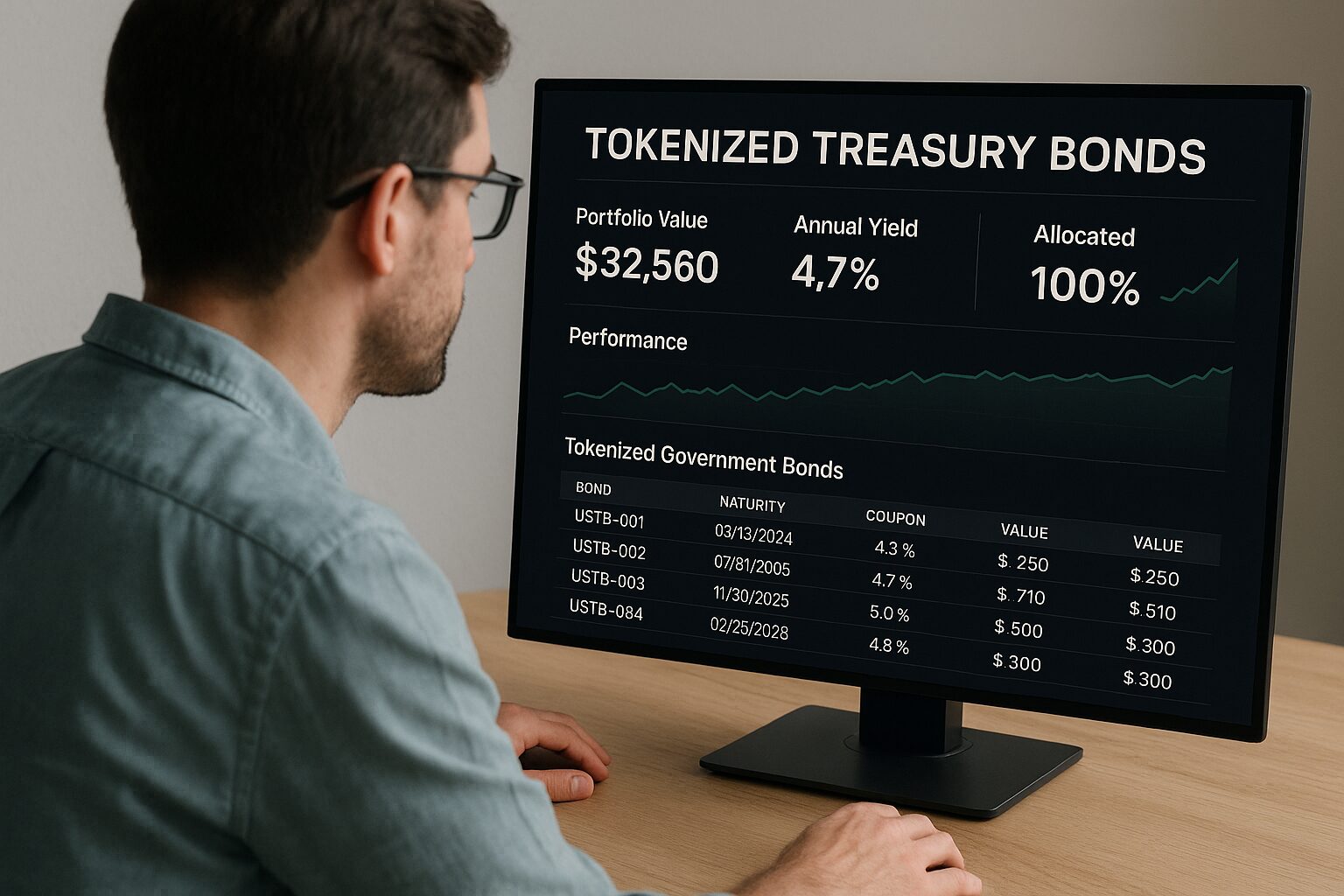In today’s uncertain financial landscape, many investors are looking for low-risk, stable sources of passive income. Treasury bonds have long served this role — and now, they’re being reinvented through blockchain technology.
Tokenized treasury bonds offer a modern, accessible way to earn reliable yields by converting government bonds into digital assets. This article will explain how they work, why they are becoming a powerful tool for wealth preservation and income generation, and how global investors can get started today.
1. What Are Tokenized Treasury Bonds?
Tokenized treasury bonds are digital representations of traditional government debt instruments, such as U.S. Treasury Bills (T-Bills), Notes, or Bonds. These tokens are issued on a blockchain and represent direct ownership or claims on the underlying asset.
Instead of using a broker or bank, investors can now purchase fractional shares of government bonds through their digital wallets — sometimes starting with as little as $100.
Tokenized treasuries function just like traditional ones: they pay regular interest and return principal at maturity. But now, they are globally accessible, more liquid, and fully transparent.
2. Why Tokenized Treasuries Are a Game Changer
- Accessibility: Anyone with an internet connection can invest — no need for a brokerage account.
- Fractional Ownership: No large capital required; invest in government debt for under $500.
- Stable Yields: Typical yields range between 4% and 5% annually, often higher than savings accounts.
- Liquidity: Some platforms allow peer-to-peer trading or DeFi-based liquidity options.
- Custody and Security: Assets are held by regulated custodians while you retain control over your tokens.
These features make tokenized treasuries ideal for long-term passive income, particularly in volatile markets.
3. How the Process Works
Tokenized treasury platforms generally follow this process:
- The platform purchases U.S. or other sovereign bonds.
- A licensed custodian holds these assets.
- Tokens are issued to represent a proportional claim on the bonds.
- Investors buy tokens and receive yield in stablecoins like USDC or in-kind tokens.
- Interest is distributed on a regular schedule, usually monthly.
Everything is handled on-chain, with transparency in real-time — including pricing, custody, and yield tracking.
4. Top Platforms for Tokenized Treasury Bonds
Here are some leading platforms offering tokenized treasuries:
- Ondo Finance: Offers OUSG tokens backed by U.S. Treasuries. Payouts in USDC.
- Matrixdock: Issues STBT, a short-term treasury token for global investors.
- OpenEden: Provides institutional-grade exposure to tokenized T-Bills.
- Backed Finance: Offers tokenized bond ETFs tradable on DEXs.
- Franklin Templeton: One of the first traditional asset managers to launch tokenized treasury products.
These platforms differ in terms of eligibility (U.S. vs. non-U.S. investors), custody solutions, and fees — so research is essential.
5. Expected Yields and Payout Structure
Tokenized treasury yields generally depend on bond type, duration, and platform structure. For example:
- 3–6 month T-Bills: ~4.7–5.2% APY
- 10-year Notes: ~3.5–4.0% APY
- Fees: Usually between 0.1% and 0.5% annually
Compared to traditional savings accounts or even stablecoin lending platforms, these returns are attractive, especially given the low risk.
6. Legal and Tax Considerations
Despite being digital, these instruments are still regulated financial products. Investors should consider:
- Tax Obligations: U.S. persons owe federal tax on interest; non-U.S. persons may be exempt under certain conditions.
- Documentation: Many platforms issue tax forms (e.g., 1099-INT equivalents).
- Compliance: Check for Reg D (U.S. accredited investors) or Reg S (non-U.S. investors) offerings.
Using tax software such as Koinly or CoinTracker can simplify reporting, especially for long-term holders or those reinvesting yields.
7. Ideal Use Cases
- Low-Risk Passive Income: Ideal for those nearing retirement or looking to balance risk.
- Stablecoin Alternative: A safer place to park USDC or USDT while earning yield.
- Crypto Treasury Management: DAOs and projects are now using tokenized treasuries for their capital reserves.
- Emergency Fund Optimization: Keep emergency cash in yield-bearing tokens with fast redemption options.
Tokenized treasuries are also a smart component of a diversified digital income strategy.
8. Key Risks to Understand
Although these are among the safest digital assets, risks do exist:
- Platform Risk: Use only audited, transparent, and regulated platforms.
- Liquidity Risk: Some tokens may have lock-up periods or limited secondary markets.
- Smart Contract Risk: Make sure contracts are battle-tested and reviewed.
- Regulatory Change: Stay informed about evolving digital asset laws in your jurisdiction.
As with all investments, start small and scale up with confidence.
9. Wealth Strategy Example: $1,000 Monthly Plan
Let’s say you invest $1,000 monthly into a tokenized treasury platform yielding 5% annually. After 10 years, you could accumulate:
- Capital invested: $120,000
- Total value (with compounding): Over $155,000
- Passive income stream: ~$600/month
This approach combines consistency, security, and yield — ideal for building stable long-term wealth.
Conclusion
Tokenized treasury bonds offer a rare blend of safety, transparency, and yield — all within a globally accessible digital framework. For those seeking passive income without high volatility, they represent one of the most effective and reliable tools available in today’s financial ecosystem.
Whether you’re a beginner looking for stable returns or a seasoned investor diversifying your crypto portfolio, tokenized treasuries deserve your full attention.
